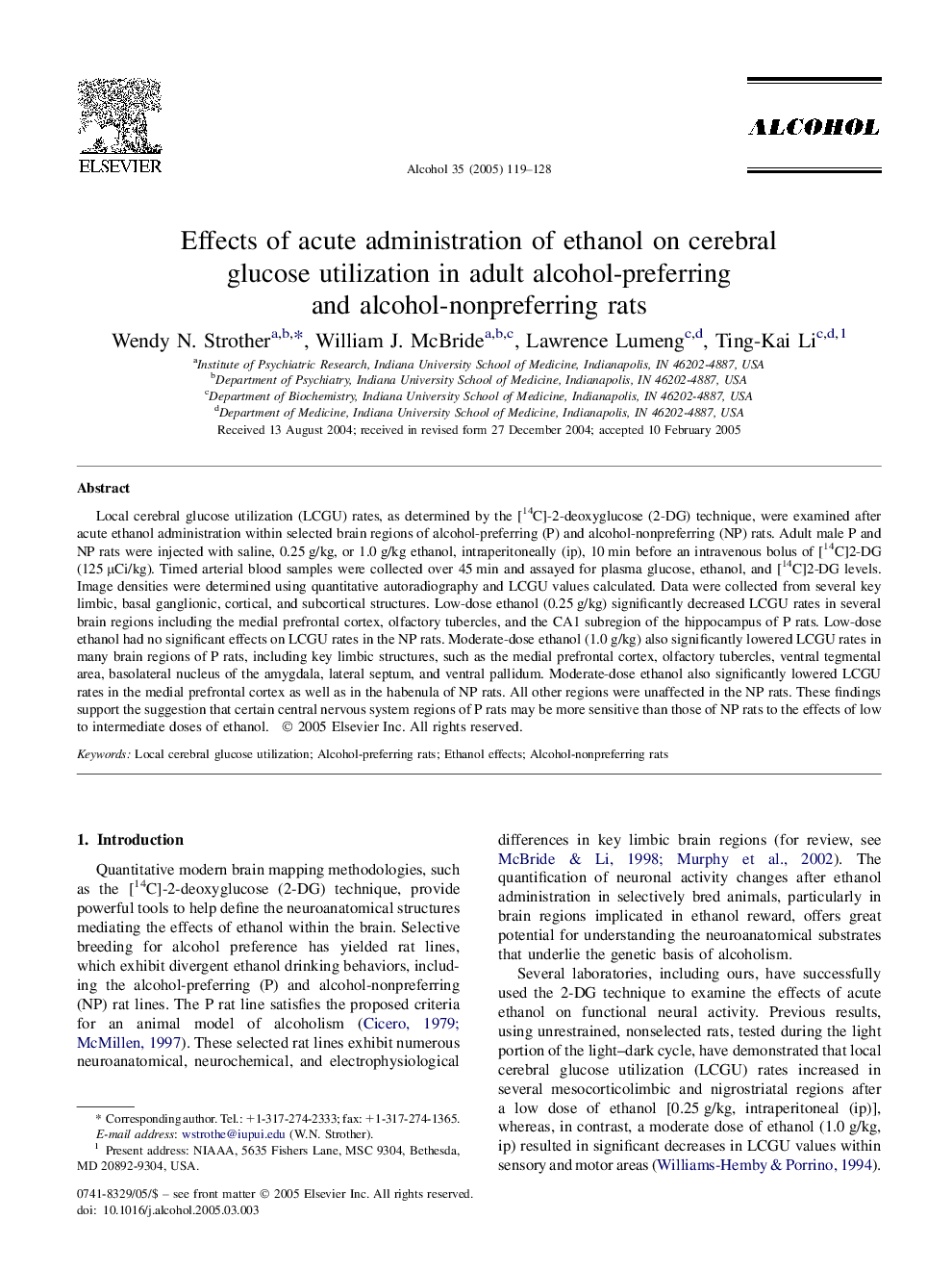| Article ID | Journal | Published Year | Pages | File Type |
|---|---|---|---|---|
| 10509002 | Alcohol | 2005 | 10 Pages |
Abstract
Local cerebral glucose utilization (LCGU) rates, as determined by the [14C]-2-deoxyglucose (2-DG) technique, were examined after acute ethanol administration within selected brain regions of alcohol-preferring (P) and alcohol-nonpreferring (NP) rats. Adult male P and NP rats were injected with saline, 0.25 g/kg, or 1.0 g/kg ethanol, intraperitoneally (ip), 10 min before an intravenous bolus of [14C]2-DG (125 μCi/kg). Timed arterial blood samples were collected over 45 min and assayed for plasma glucose, ethanol, and [14C]2-DG levels. Image densities were determined using quantitative autoradiography and LCGU values calculated. Data were collected from several key limbic, basal ganglionic, cortical, and subcortical structures. Low-dose ethanol (0.25 g/kg) significantly decreased LCGU rates in several brain regions including the medial prefrontal cortex, olfactory tubercles, and the CA1 subregion of the hippocampus of P rats. Low-dose ethanol had no significant effects on LCGU rates in the NP rats. Moderate-dose ethanol (1.0 g/kg) also significantly lowered LCGU rates in many brain regions of P rats, including key limbic structures, such as the medial prefrontal cortex, olfactory tubercles, ventral tegmental area, basolateral nucleus of the amygdala, lateral septum, and ventral pallidum. Moderate-dose ethanol also significantly lowered LCGU rates in the medial prefrontal cortex as well as in the habenula of NP rats. All other regions were unaffected in the NP rats. These findings support the suggestion that certain central nervous system regions of P rats may be more sensitive than those of NP rats to the effects of low to intermediate doses of ethanol.
Keywords
Related Topics
Life Sciences
Biochemistry, Genetics and Molecular Biology
Biochemistry
Authors
Wendy N. Strother, William J. McBride, Lawrence Lumeng, Ting-Kai Li,
